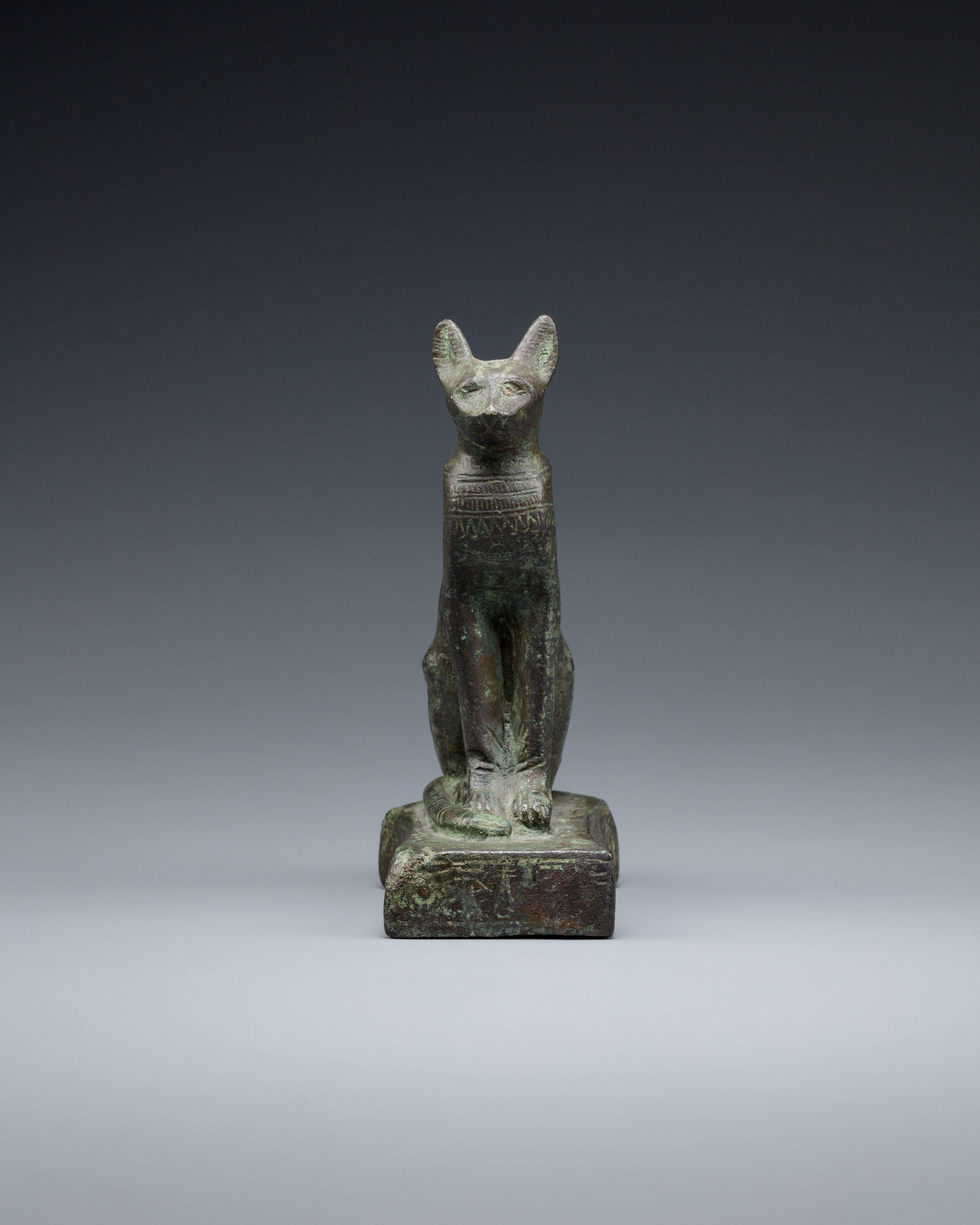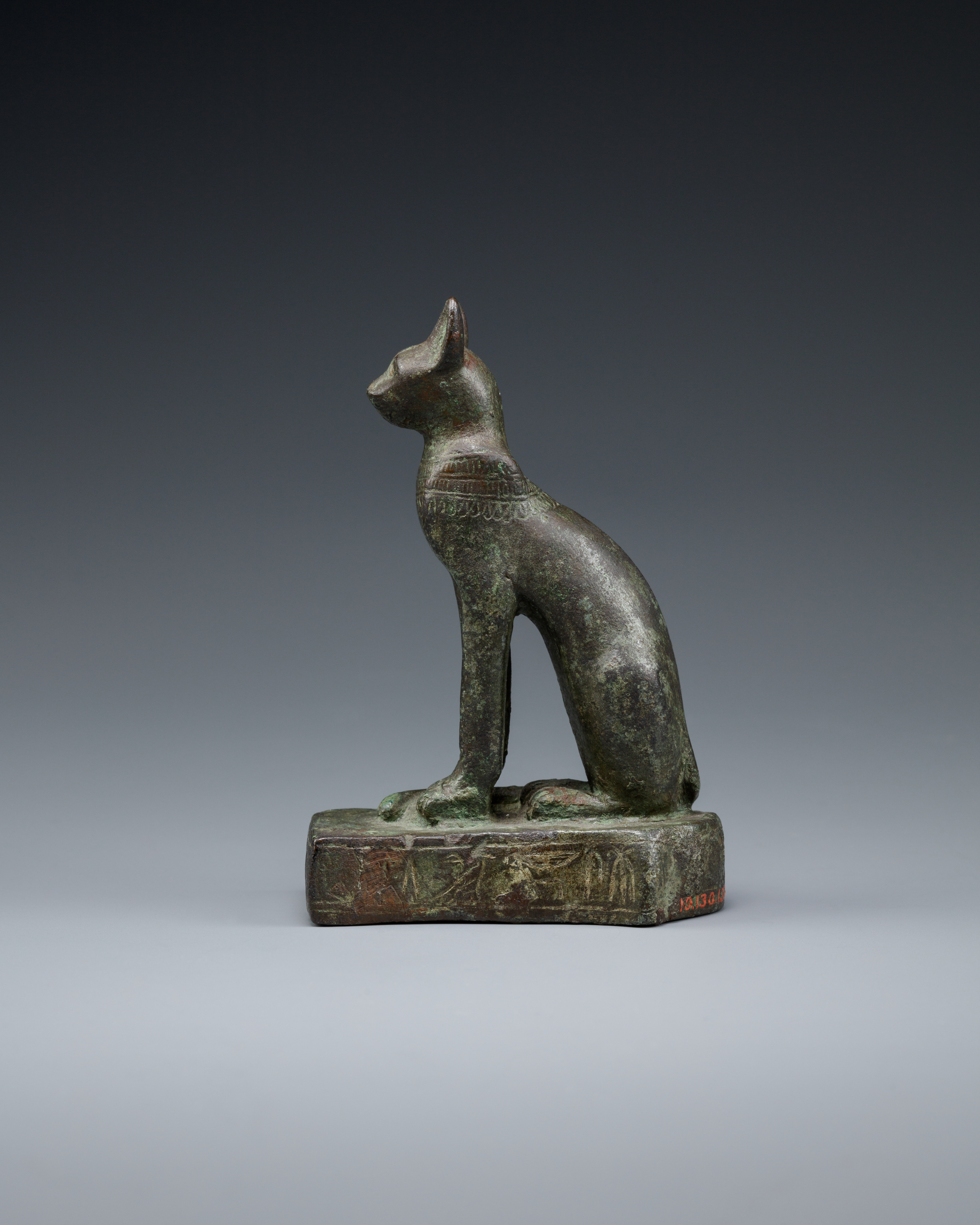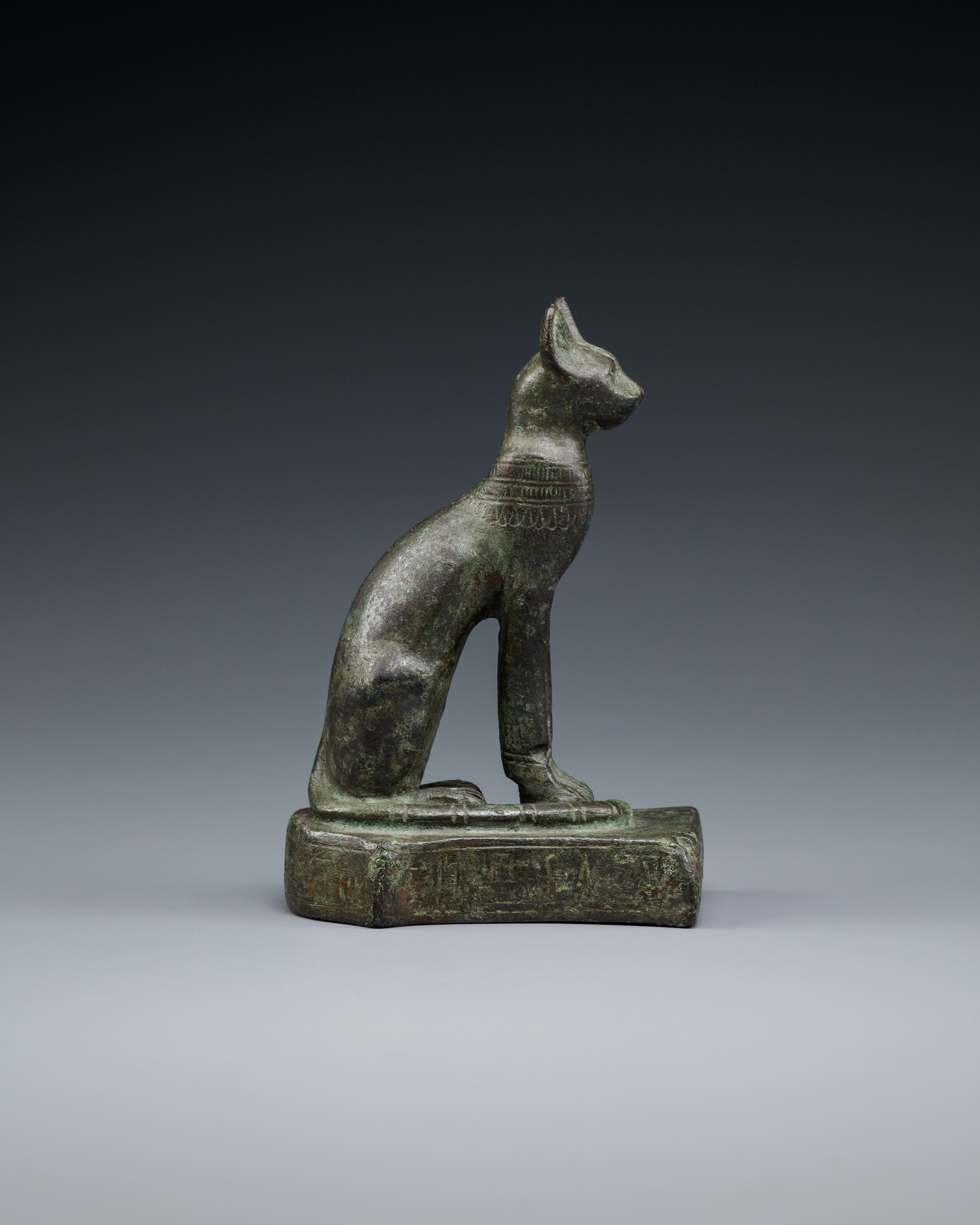Cat with very worn inscription
Late Period–Ptolemaic Period
Not on view
Bastet was a powerful goddess of Lower Egypt, one who was protective and could bring about great prosperity. In zoomorphic form, she was represented as a cat and cats were considered sacred to her. This cat sits on a menat-shaped base in a typical pose, upright with its tail wrapped along its right side. It is poised and alert, on guard against external forces. A worn inscription on the base preserved Bastet’s name and parts of the donor’s parents’ names.
Like cat-headed Bastet statuettes, these cats often have special adornments. This figure’s ears seem to have been pierced for earrings, probably originally of precious metal, and it wears a broad collar, below which hangs an amulet, the identity of which is unclear. Incised marks on the tail imitate the ringed tail of a cat. It also has inscribed bands above the front paws, a curious feature not commonly represented; the markings could simply be the creased joint of the flexed paws, or they could represent more jewelry, such as bracelets.
Cat statuettes were among some of the most common zoomorphic dedications of the Late and Ptolemaic Periods. Small ones, like this one, would have been dedicated as offerings to temples or would have been deposited in catacombs alongside cat mummies, as at the extensive catacombs at Bubastis and Saqqara. Sometimes larger hollow examples held a cat mummy inside.
Due to rights restrictions, this image cannot be enlarged, viewed at full screen, or downloaded.
This artwork is meant to be viewed from right to left. Scroll left to view more.







